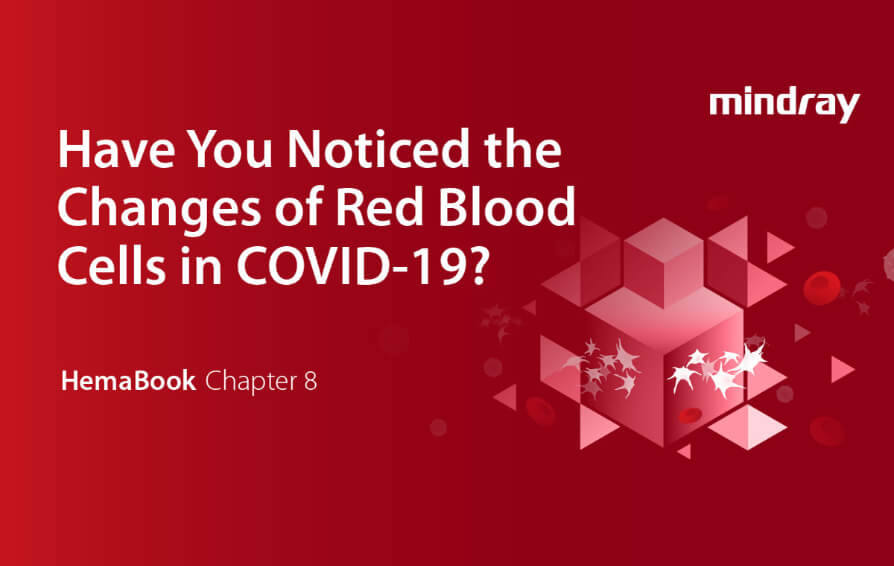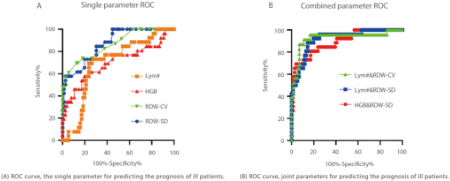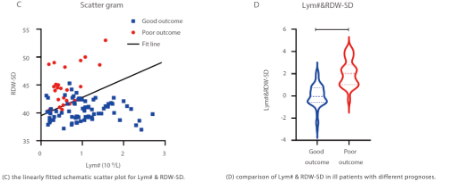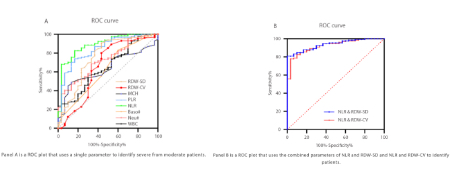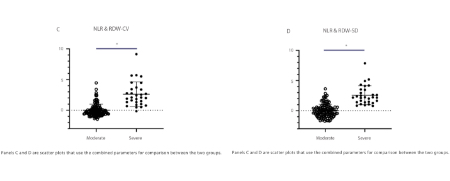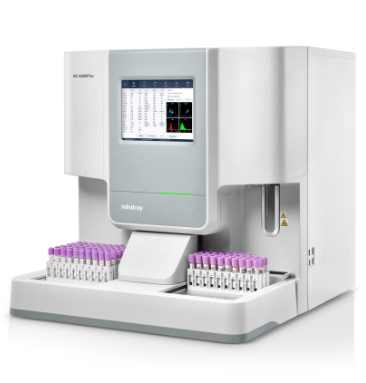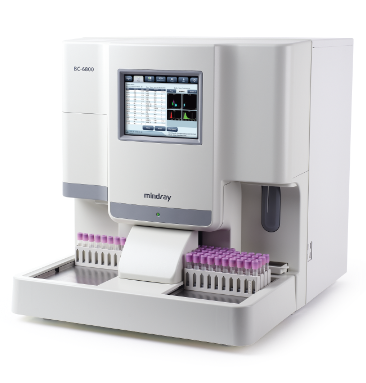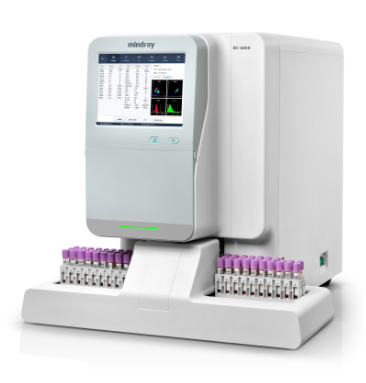As of January 26th, 2021, the coronavirus disease 2019 (COVID-19) pandemic has affected over 100 million people worldwide. Vaccination would help improve the situation in future. However, at this time, identifying patients at highest risk for severe disease is important. In order to facilitate early intervention and to manage local hospital resources to mitigate the critical care crises, doctors conduct research in routine, low-cost, and suggestive parameters to assist with COVID-19 prognosis and the identification of severe cases[1,2,3].

Inflammatory parameters, such as white blood cell count (WBC), neutrophil count, neutrophil-to-lymphocyte ratio (NLR) could support COVID-19 diagnosis and prognosis. How about red blood cells?
Observed erythrocytes changes in critically ill patients
Dr. Wang compared hematological results from the good and poor outcome groups and found the best single parameter for predicting the prognosis of severe patients is RDW-SD[4,7]. What’s more, combined parameters Lym# & RDW-CV as well as Lym# & RDW-SD are better for predicting the prognosis of severe COVID-19 (Figure 2)[7].
Figure 2. Prediction analysis of hematology parameters and the outcomes of patients with severe COVID-19. Lym# & RDW-SD: joint parameter generated after linear fitting of Lym# and RDW-SD. ****, P<0.0001.
Dr. Zhang has found that HGB is lower in the severe group than in the moderate group[5]. New joint parameters Lym% & HGB have the best sensitivity and specificity (Table1). So Lym% & HGB can be used as indicators of disease prognosis.
Table 1. Receiver operating characteristic analysis results for the three parameters

AUC, area under the ROC; Lym%, percentage of lymphocytes; HGB, hemoglobin.
Another article from Dr. Wang[6] described that many hematological parameters changed as the disease progressed, including NLR, RDW-CV, RDW-SD. The combined parameters of NLR & RDW-SD, as generated by linear fitting, had the better diagnostic efficiency (AUC =0.938), which was the best one among single parameters (Figure 3). When the cut-off value was 1.046, the sensitivity for distinguishing the severe cases from the moderate cases of COVID-19 was 90.0% while the specificity was 84.7%.

Figure 3. ROC analysis using single and combined parameters in the diagnosis of severe cases of COVID-19. “*” standing for significant deviation.
Why did these erythrocyte changes happen in critically ill patients?
It’s been found that the increase in RET may contribute to elevated RDW (Figure 4). As the disease progressed, MFR and HFR increased, so did RDW-SD. The increased RET in peripheral blood may cause an increase in anisocytosis.

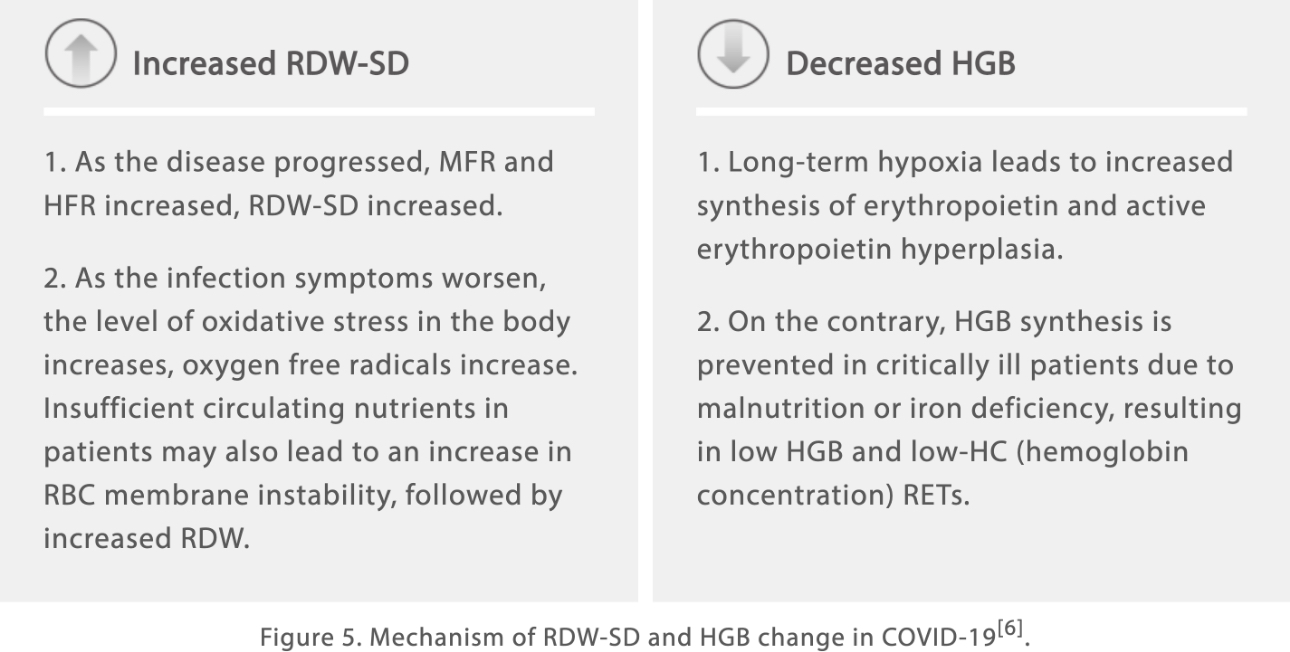
How can we observe these erythrocyte changes in the hematology analyzer?
When we look at the 9-square scattergram, the RBC volume/hemoglobin concentration (V/HC) scattergram showed that the magenta scatters of critical patients were significantly left-skewed, indicating that RETs with a low HC (hemoglobin concentration) increased significantly, which may represent a unique pattern of erythroid hyperplasia in critical COVID-19 patients (Figure 6A)[7]. However, whether such low-HC RETs could be a diagnostic marker of critical COVID-19 still requires further investigation[7].
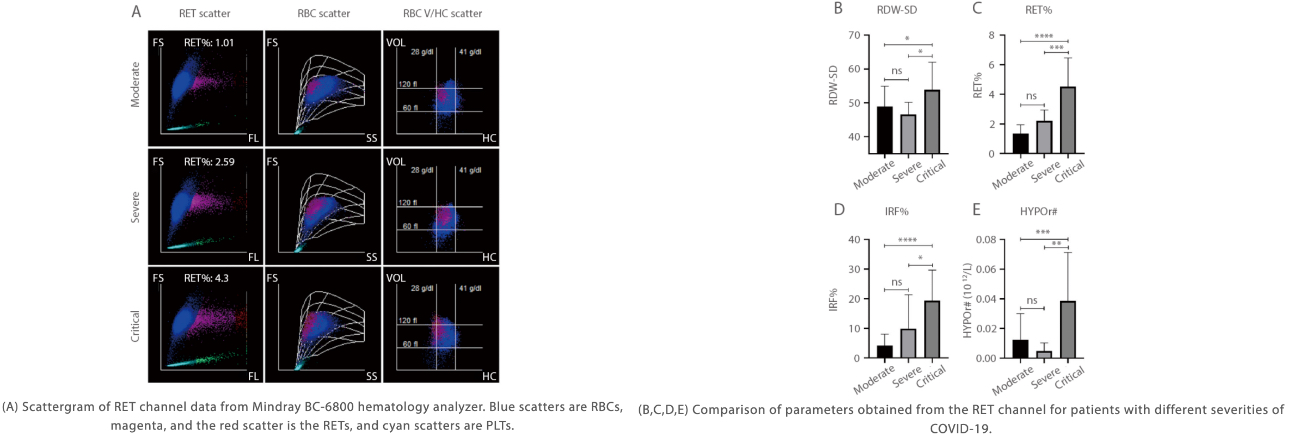
Figure 6. Differences of RET channel results in patients with different severity of COVID-19. Data are shown as the mean ± SD. ****, P<0.0001; ***, P<0.001; **, P<0.01; *, P<0.05. FS, forward scatter; SS, side scatter; FL, fluorescence; HC, hemoglobin concentration; VOL, volume; ns, nonsignificant.
With advanced technologies, the newly combined hematological parameters, such as Lym% & RDW-SD, Lym# & HGB and NLR & RDW-SD, have been found as supportive predictors during COVID-19 prognostics. More and more covariates can be studied and developed on the Mindray BC-6000 series analyzers. Especially on BC-6800Plus, the RET channel can detect the number, size, and hemoglobin concentration of RBCs and RETs using highly sensitive laser scattering technology. Thus, it's recommended to start using self-defined parameters for COVID-19 prognosis now.
References:
[1] Ghahramani, S., Tabrizi, R., Lankarani, K.B. et al. Laboratory features of severe vs. non-severe COVID-19 patients in Asian populations: a systematic review and meta-analysis. Eur J Med Res 25, 30 (2020).
[2] Li, Q., Cao, Y., Chen, L. et al. Hematological features of persons with COVID-19. Leukemia 34, 2163–2172 (2020).
[3] Wang D, Hu B, Hu C, et al. Clinical Characteristics of 138 Hospitalized Patients With 2019 Novel Coronavirus–Infected Pneumonia in Wuhan, China. JAMA. 2020;323(11):1061–1069.
[4] Henry BM, Benoit JL, Benoit S, Pulvino C, Berger BA, Olivera MHS, Crutchfield CA, Lippi G. Red Blood Cell Distribution Width (RDW) Predicts COVID-19 Severity: A Prospective, Observational Study from the Cincinnati SARS-CoV-2 Emergency Department Cohort. Diagnostics (Basel). 2020 Aug 21;10(9):618.
[5] Zhang W, Zhang Z, Ye Y, Luo Y, Pan S, Qi H, Yu Z, Qu J. Lymphocyte percentage and hemoglobin as a joint parameter for the prediction of severe and nonsevere COVID-19: a preliminary study. Ann Transl Med. 2020 Oct;8(19):1231.
[6] Wang C, Deng R, Gou L, et al. Preliminary study to identify severe from moderate cases of COVID-19 using combined hematology parameters. Ann Transl Med. 2020;8(9):593. doi:10.21037/atm-20-3391.
[7] Wang C, Zhang H, Cao X, et al. Red cell distribution width (RDW): a prognostic indicator of severe COVID-19[J]. Annals of translational medicine, 2020, 8(19).
